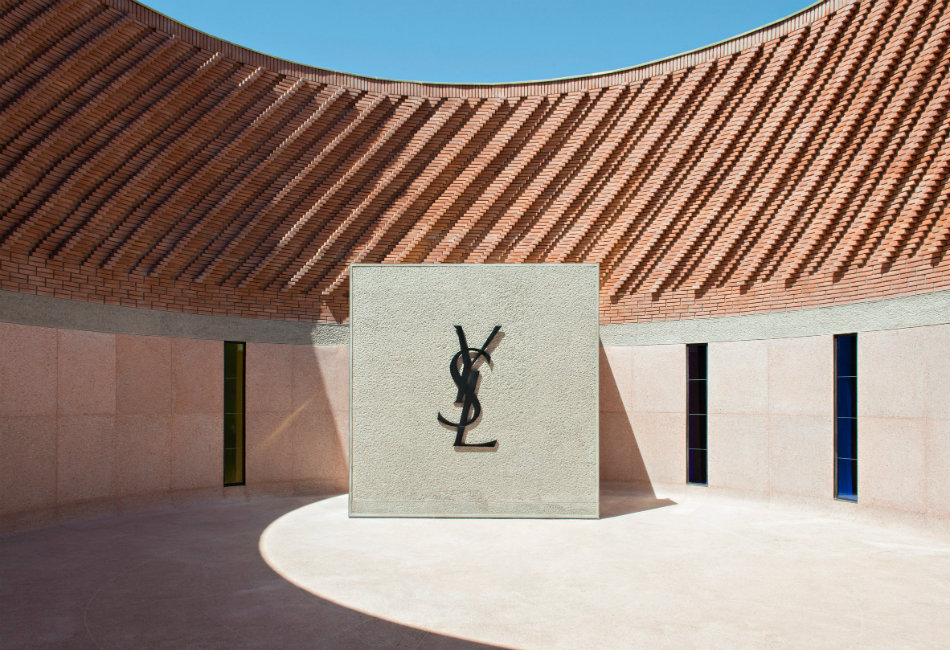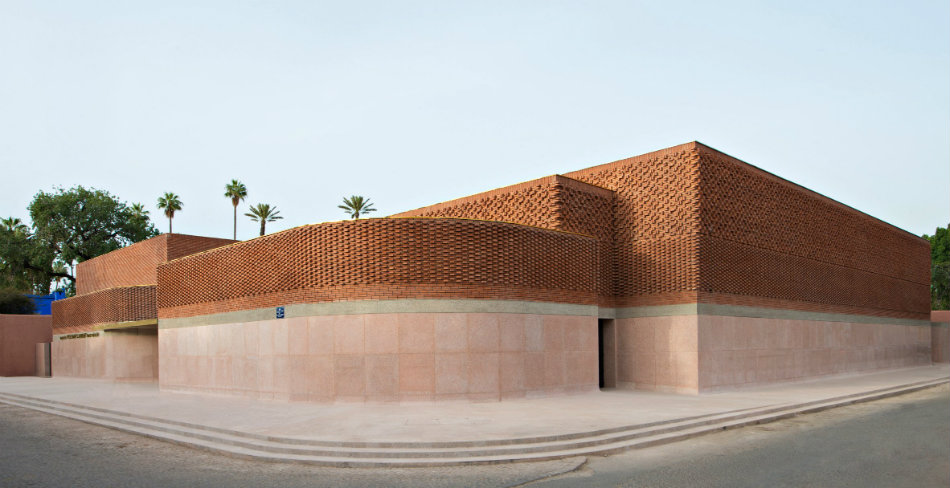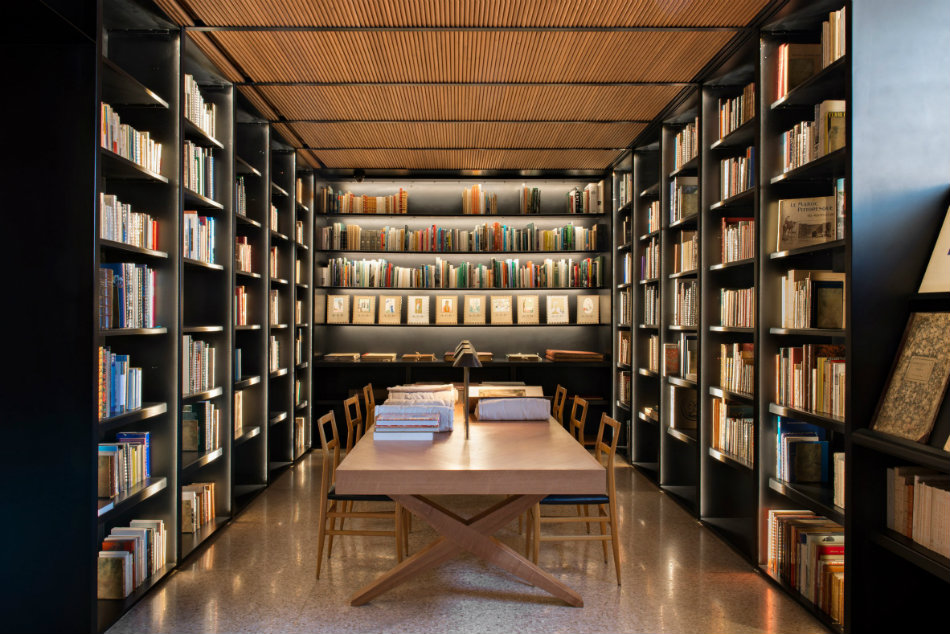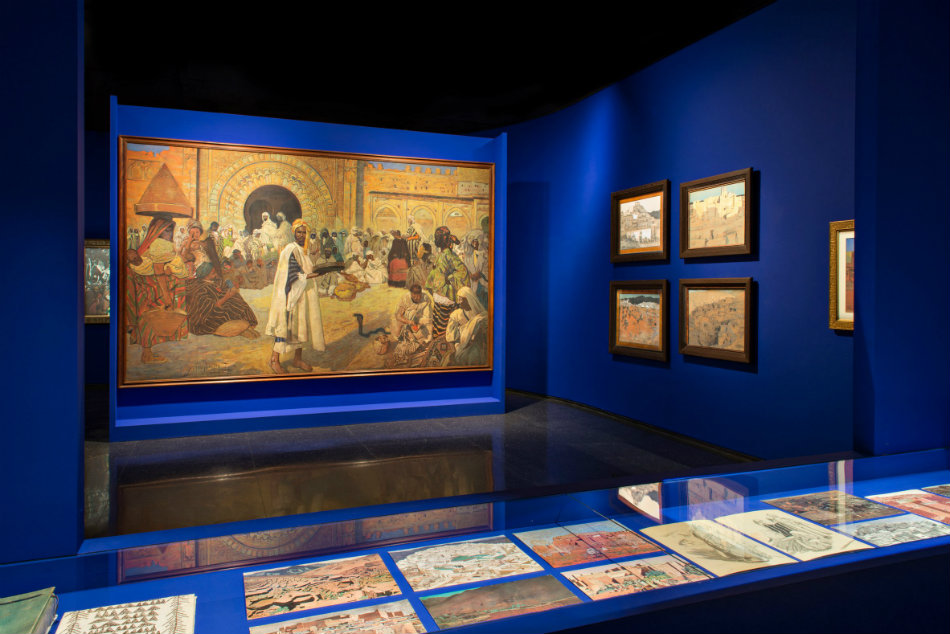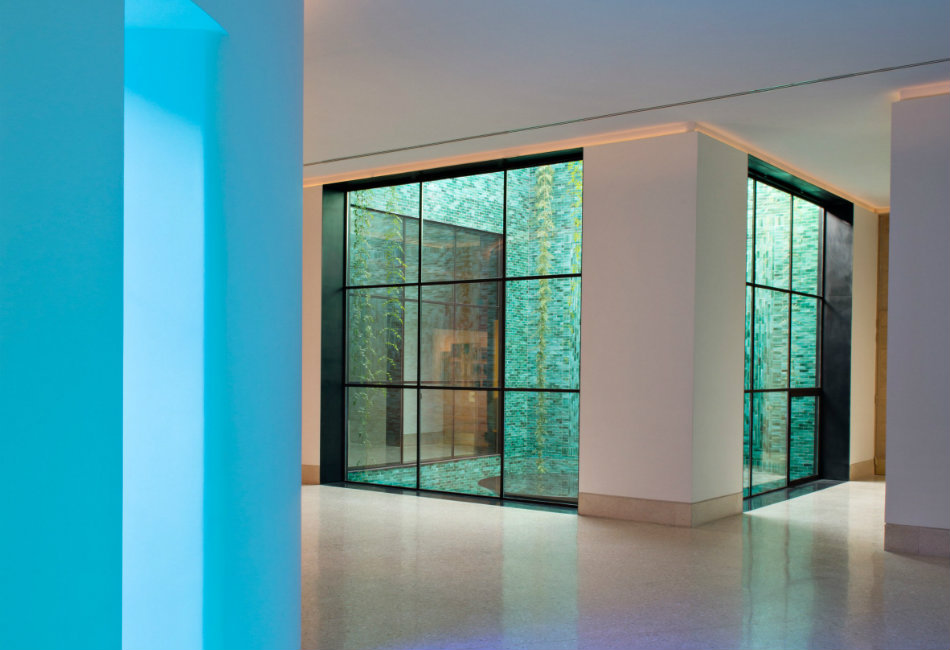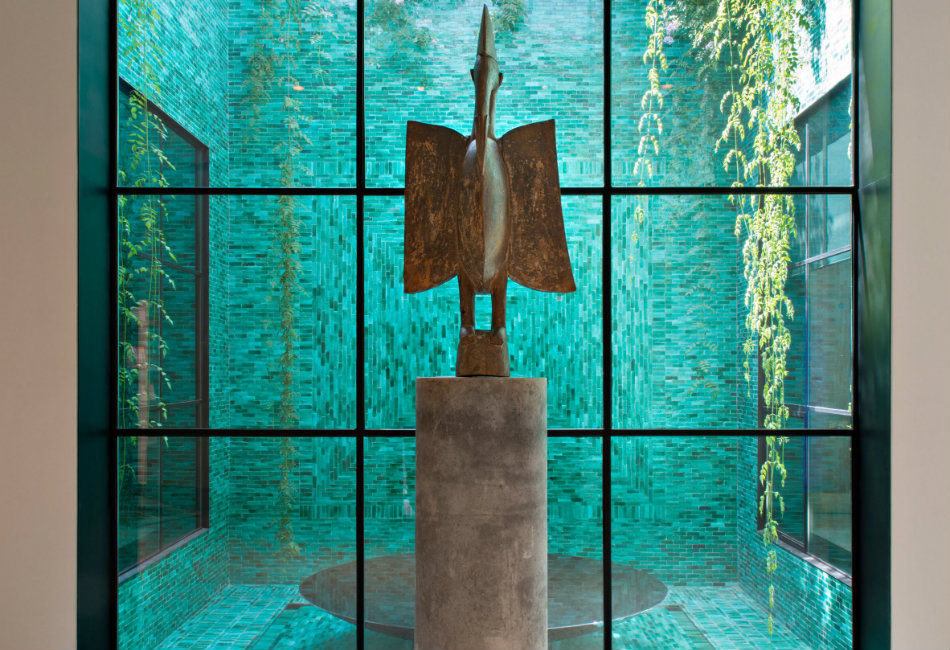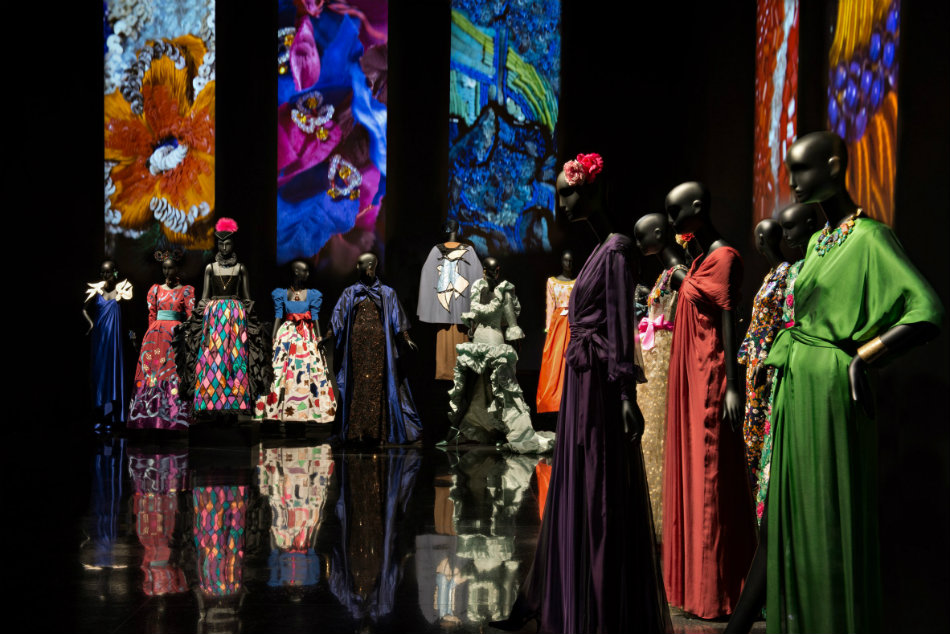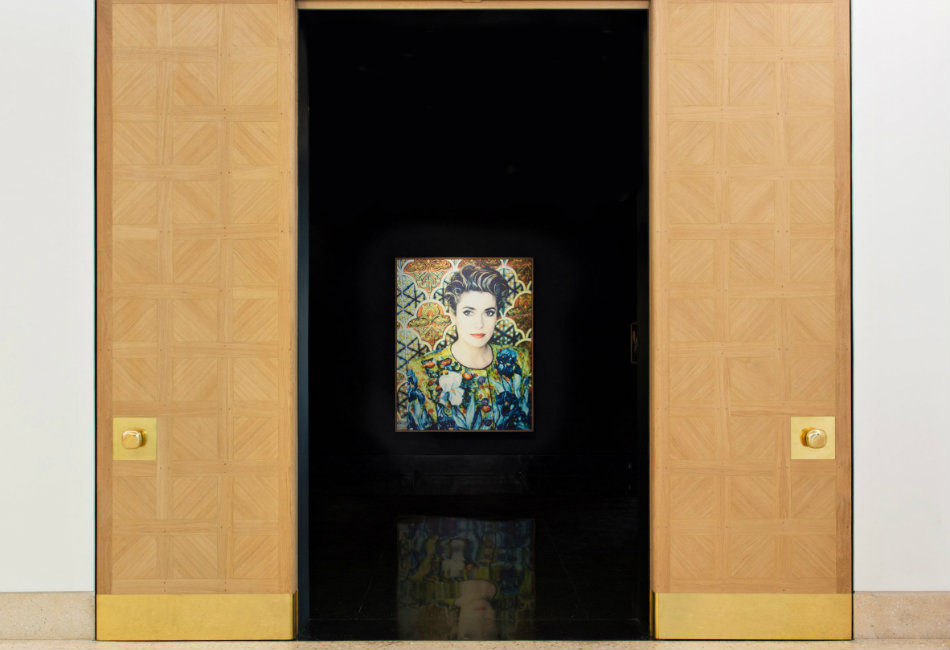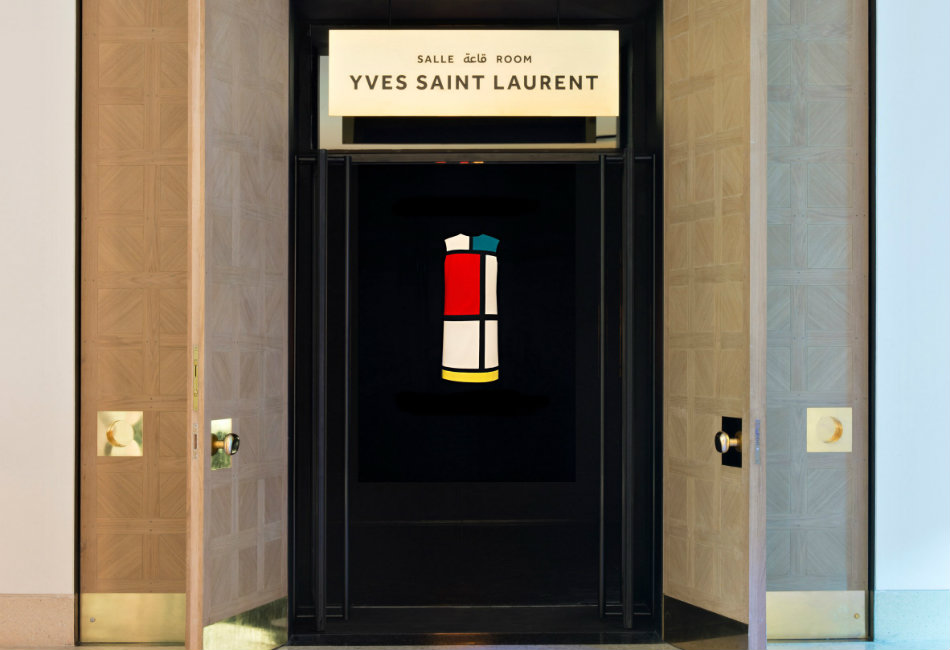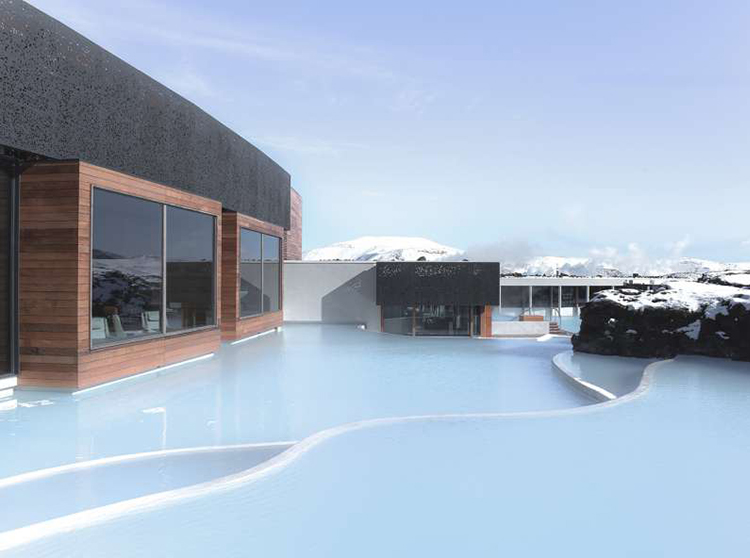A lace-like brickwork facade and an interior inspired by a couture jacket lining are some of the fashion-inspired features of Studio KO's Musée Yves Saint Laurent in Marrakech. Dedicated to the work of legendary couturier Yves Saint Laurent, the 4,000-square-metre building is the first dedicated fashion museum in Africa. It includes permanent and temporary exhibition spaces, a research library with over 6,000 volumes, a 150-seat auditorium, and a bookstore and terrace cafe.
In addition, the museum houses a conservation archive and laboratory that will store and upkeep part of the extensive collection of clothing, haute-couture accessories and drawings belonging to the Fondation Pierre Bergé.The museum is located on Rue Yves Saint Laurent, next door to the Jardin Majorelle – a 12-acre botanical garden that formerly belonged to artist Jacques Majorelle, but was bought and restored by Saint Laurent and Bergé in the 1980s.
The building's design incorporates references to the couturier's work, while also making use of local materials and building techniques.Its exterior incorporates terracotta brickwork designed to recall the warp and weft of fabric, as well as curved and angular volumes in earthen-coloured terrazzo that the French architects said reference the "succession of delicate and bold forms that characterised the work of Yves Saint Laurent".
In contrast, the museum's entrance hall has smooth white walls that are designed to evoke the velvety lining of a couture jacket. The monochromatic stained glass windows that circle the curved lobby wall are inspired by traditional Moroccan-style stained glass.The museum's 400-square-metre permanent exhibition space, is designed by scenographer Christophe Martin, and showcases 50 couture creations.
The exhibition is set around themes that were central to Saint Lauren's work: Masculine-Feminine; Black, Africa and Morocco; Imaginary Voyages; Gardens; and Art. Key pieces include the pea coat, the Mondrian dress, "le smoking" and the safari jacket.The exhibition's spot-lit models are backdropped by black painted walls, where an audiovisual installation is projected. The installation brings together written and spoken words, photographs, interviews, music and film extracts that contextualise the exhibited garments.
















